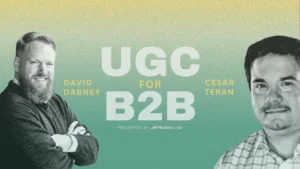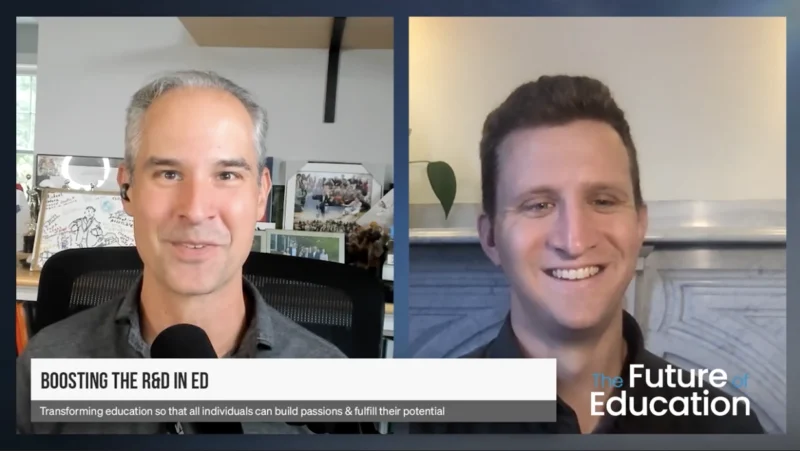LEGO’s Building Better Students At Every Age
[vc_row][vc_column][vc_media_grid grid_id=”vc_gid:1530201439178-0d670f38-a723-9″ include=”29237,29242,29241,29239,29236″][/vc_column][/vc_row][vc_row][vc_column][vc_column_text]For years now, statistics and projections have continually shown that somewhere around 65 percent of the jobs that current college graduates will soon be working in have not been invented yet. It’s an oft quoted statistic that has, at least in part, been shown to bear truth. In an era of rapidly advancing technology, how are parents and educators supposed to prepare kids to be successful in their jobs, many of which do not exist yet and may require skills that we don’t have curriculum for today?
Answering this question has seen various solutions in the form of advanced STEM (science, technology, engineering, and math) and STEAM (science, technology, engineering, art, and math) programs. At ISTE 2018, the Chicago-based Education Technology conference, one of the standout presentations was from the team at LEGO Education. Showcasing a versatile, multi-level, cross-curricular approach to learning that spanned early development through high school, LEGO’s solution elegantly, and colorfully, bridged the gap between the STEM and STEAM worlds.
LEGO’s program features a multi-level interdisciplinary approach that, much like it’s ubiquitous bricks, builds on previous levels of knowledge and experience. Learning is built into the very nature of LEGOs, and so they are the perfect tool for teaching both technical and ‘soft’ social skills. For students of all ages and skill levels, LEGO’s come with an engagement factor that incorporates many of the social skills such as teamwork, collaboration, creativity, and problem solving into the very way that they interact with the LEGO sets.
Sam Chiappetti, the Partnership Manager for the front-end team of LEGO Education and a pre-school educator herself, explained some of the philosophy behind the pre-school sets that lay the foundation for skills that will be utilized in later LEGO curricula, as well as in life.
LEGO sets the foundation for learning advanced technical and coding skills in pre-school, starting off with Duplo sets. Millions of kids over the past few decades have been familiar with these colorful plus sized bricks, but LEGO’s current sets, especially the brand STEAM Park set, have been designed to build the prerequisite skills for later learning in LEGO’s coding and robotic sets. The new Duplo bricks for ages 2-5 (pre-school) hit both the STEM and STEAM targets by improving emotional development, literacy, and softer social skills on top of teaching young children about mechanical concepts such as gears. As with all LEGO products, the attention to detail in design is impressive, with thoughtful touches such as gears that won’t pinch little fingers.
Collaboration is a big part of the new Duplo sets, such as STEAM Park, which are physically quite large and contain multiple mini figures. The goal is to encourage children to role play, working together to build and explore the park. Sam emphasized that this sort of activity lays the foundation for real-life team partnership skills that they will encounter with classmates, as well as future work colleagues. This is incredibly valuable, particularly for children who may not have siblings at home, and it sets a positive foundation for healthy social collaboration.
After students begin to outgrow Duplo, they move into more difficult LEGO sets such as the WeDo 2.0, which is designed on skill level progression, rather than age level. A long way from your father’s old LEGO bricks, these smart sets start to teach kids coding and are immediately hands on, right down through the kindergarten level, teaching the basics of the technical side of coding along with critical thinking and collaborative problem solving. Students build sets, and then bring them to life through coded commands than can include movement and sound, while learning about more advanced mechanical concepts such as gearing and friction by actually observing them in action.
When asked why she uses LEGO in her classroom Amanda Barber, one of LEGO Education’s Master Educators, responded that after more than a decade of teaching, LEGO was the first solution that had young students actively engaged with the teacher and each other, rather than sitting at their desks distracted or isolated. The LEGO coding material, with its guess-and-check solutions, create incentives for students to encourage and cheer each other on as they work together to problem solve. This level also requires kids to use skills such as careful listening and team collaboration in order to make their sets perform the tasks they want them to. The result is students encouraging and building each other up in the classroom, rather than just the teacher.
The coding software is extremely accessible and runs on affordable equipment like Chromebooks. Once again Amanda emphasized the cross-curricular nature of LEGO’s program, with offers multiple options for interdisciplinary use, but remain fresh and exciting for students.
Once basic coding skills have been learned, it’s time for student to move on to more advanced robotics sets. Scott Richards, another of LEGO Education Master Educators, described using the LEGO Mindstorm EV3 sets in the six robotics teams that he coaches.
Just like Amanda and Sam, Scott emphasized the cross-curricular nature of the sets, and the space they create for new teaching and self-learning opportunities. With this older age level of students, cross-curriculum means deeper inter-departmental integration within the school. Scott gave the example of a project involving a robotic turtle with a broken leg that students had to figure out how to repair with only a limited number of parts. In english class, they wrote a creative story about the turtle, studied turtle’s in science class, paying particular attention to their natural range of motion, and then returned to robotics class with the material and inspiration to fix, and then program, an adequate repair.
At this level, LEGO’s programing possibilities are truly endless, with dynamic but accessible sets that provide students with instant feedback when they succeed as well as when their code doesn’t quite work. Importantly with this older age group, the instantaneous feedback and dynamic, creative nature of the LEGO sets removes the stigma and pressure from ‘failure,’ making it instead about creative problem solving and overcoming a temporary road block to a successful build.
These skills are vitally important for this older age group and help them to succeed in other school activities, as well as their personal lives. LEGO takes a long term approach to education, building social and technical skills up through the years as students prepare for college, the workforce, and their future families. Though they may not exist yet, LEGO’s approach to education prepares students for both highly technical jobs that involve coding, as well as creative fields that require collaborative problem solving and communication.[/vc_column_text][/vc_column][/vc_row]







